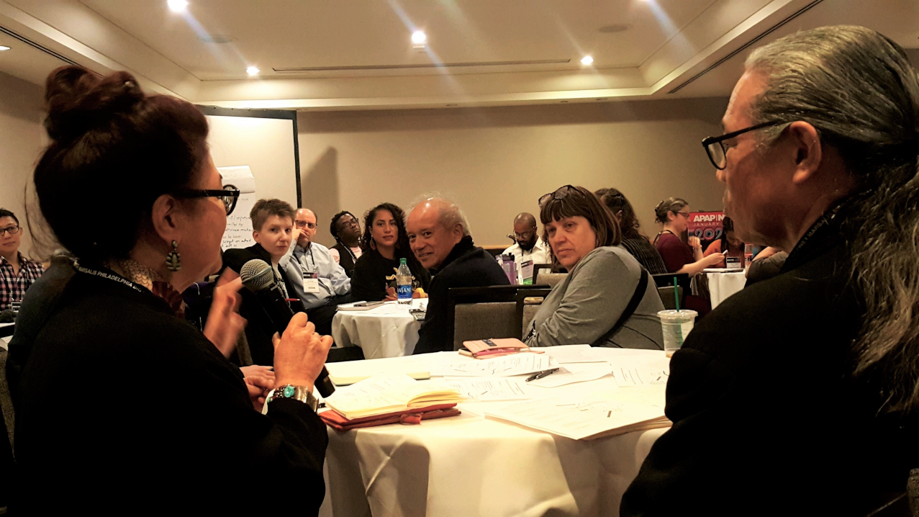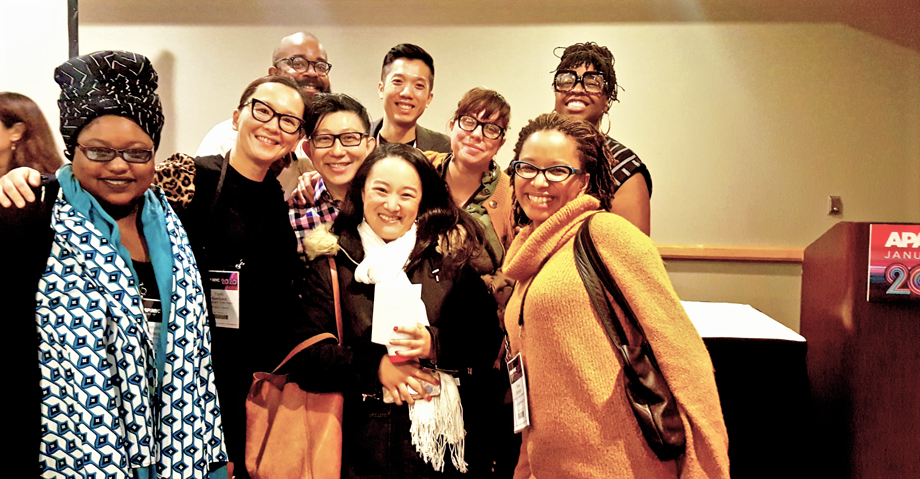How Artists and Presenters Do Anti-Oppression Work – Part 2
Posted by Feb 12, 2020

Kyoung H. Park
Our APAP session “How Artists and Presenters do Anti-Oppression Work” asked our panel: what does anti-oppression work mean to you, and how do you currently practice it? What does an organization or individual doing anti-oppression work effectively look like? As detailed in Part 1 of this blog, this session was framed implementing Andrea Smith’s organizing principles suggested in “Heteropatriarchy and The Three Pillars of White Supremacy” in order to center artists, arts leaders, and cultural organizers of color in an intercultural exchange. Part 2 synthesizes key findings of our conversation.
What Anti-Oppression Work Looks Like
As a group, we observed how doing anti-oppression work reorients existing power structures to improve the ways we relate to each other. Within organizations, this means that we are disrupting the ways we create and produce our work, allowing for undoing to take place. This work usually disrupts the conventional ways we already do our work, as this new learning (or unlearning) challenges us to step aside from our “business as usual” to shift our focus toward dismantling racial and social hierarchies within our organizations. This dismantling of hierarchies is activated by intentionally addressing ongoing racial injustices within our organizations, and by allowing disruptions to create space for us to discuss shared learnings and fear-based responses to the implementation of change. This work illuminates deeply entrenched systems of exclusion, which are perpetuated through systemic and organizational cultures that normalize discrimination.
For systemic change to take place, anti-oppression work compels us to examine our organizational core values and how they’re manifest in our processes, in order to critically identify where there are gaps to be filled. These gaps are then addressed by examining how we’re allocating our time, resources, and power to build our staff, board, communities, and audiences. More significantly, anti-oppression work requires us to fill these gaps through staffing, curatorial, and artistic choices that advance inclusivity and representation in order to address racial injustices.
Anti-oppression work looks like a life-long commitment to equity, diversity, and inclusion; it is a continuous process of active learning in which artists and arts leaders pursue change, while leaving a map for those who are doing the work with us, to ensure that this work is sustained and remains constant.

Low-Hanging Fruit for Change
Our facilitation team held space for session participants to share lived experiences of oppression in their practice as artists or arts leaders and, through peer-based exchanges, articulate specific actions we could take to create change in the field. This section describes the main challenges and solutions that surfaced during our session, which followed an iceberg model designed to identify low-hanging fruit to do anti-oppression work in the performing arts presenting field.
Gatekeeping was identified as a structural form of oppression. In the field of music, Eurocentric and classical curatorial and funding preferences were identified as a challenge, in addition to the limited opportunities provided to hip hop artists by curators and decision makers. More broadly, “cultural” work by artists of color is not seen as artistic work, and more often than not, people of color are asked by HR of arts organizations to do EDI work for free—instead of being provided opportunities to create art. Lastly, the requirement of academic degrees in fine arts training was discussed as a structural and cultural form of oppression by participants of our session, which was further complicated by the fact that a white man without academic degrees still found opportunities for career advancement in the field, unlike the woman of color sitting next to him in the room.
For these systemic problems, we collectively identified multiple strategies to combat exclusion. For example, it was recommended that we first recognize our own positions as gatekeepers for other people of color, and find ways for us to liberate ourselves from our own positions in the field. This slight shift in perspective can further empower us to stop fighting to gain access to spaces we’re gated out of as artists of color. However, when we are provided opportunities, it was encouraged for artists of color to ask for more than is expected.
At the same time, it was encouraged for curators, programmers, agents, and presenters to look at the diversity within their audiences and reflect it on stage. Diversity of representation can be facilitated by lowering fees to enable more access to artists, by empowering artists to do work for themselves, by flipping the script on what real art is at an institutional level, and remove degree requirements from job postings to increase entry of people of color at all levels of our organizations.
As evidenced by the low-hanging fruit identified through our peer-based conversations, doing anti-oppression work as artists and presenters is highly achievable and can be pursued in very simple and practical ways, if we can recognize that this work is less about the transactional nature of our field but rather about the ways we exist in relationship with each other.
By allowing the creation of art to be a vehicle for a larger dismantling of existing racial, social, and power structures, anti-oppression work allows us to do the necessary work to provide equitable and socially just opportunities for artists and communities of color to be centered in the arts. This is imperative as de-centering whiteness allows us to strengthen not only our participation in the creation of art, but the cultural participation of artists and communities of color in our democracy.

Anti-Oppression Values
Anti-oppression work as a social practice is based on values focused on equity. Anti-oppression work centers us as the owners of our own processes and needs. It breaks down the boundaries that socially divide us to reveal the wholeness and divinity that exists within us and among us.
When we turn to community, anti-oppression work values our authenticity and cultural representation, acknowledging that we are all related. We are all in this journey together and we all have a voice in the decisions that affect us.
In our quest for racial equity, liberation, and peace, we are challenging the narratives that divided us; and we recognize that not only do we have the creativity and agency to change these narratives, but that by doing so, we allow ourselves to have a second chance at redemption.
Anti-oppression work is not only a radical act of change, but a radical act of joy.
References and Suggested Readings
INCITE! The Revolution Will Not be Funded: Beyond the Non-Profit Industrial Complex, Duke University Press, 2017.
Martinez, Elizabeth “Betita.” “What is White Supremacy?” February 1998.
Okun, Tema. “White Supremacy Culture.” Dismantling Racism Works Web Workbook, DRWORKSBOOK.
Smith, Andrea. “Heteropatriarchy and the Three Pillars of White Supremacy: Rethinking Women of Color Organizing,” Color of Violence: The INCITE! Anthology edited by INCITE! Women of Color Against Violence. Duke University Press, 2016.
Solomon, Akiba and Rankin, Kenrya. How We Fight White Supremacy. Bold Type Book. 2019.





